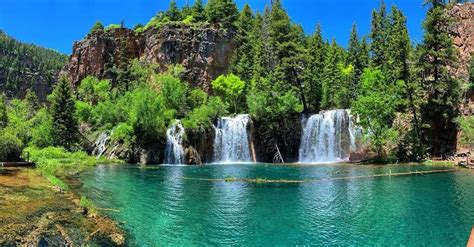Cleanest Water United States

The United States is home to some of the cleanest and most pristine water sources in the world. From the majestic glaciers of Alaska to the sun-kissed beaches of Florida, the country boasts an incredible array of lakes, rivers, and coastal areas that are renowned for their exceptional water quality. In this article, we will delve into the cleanest water sources in the United States, exploring the factors that contribute to their exceptional purity and highlighting the importance of preserving these natural wonders for future generations.
Key Points
- The cleanest water sources in the United States are primarily located in areas with low population density and minimal human impact.
- Glaciers and snowmelt are key contributors to the exceptional water quality found in many of these areas.
- Effective conservation efforts and stringent water quality regulations have played a crucial role in preserving the cleanliness of these water sources.
- Some of the cleanest water sources in the United States include Crater Lake in Oregon, Lake Tahoe in California/Nevada, and the Upper Mississippi River.
- Pollution, climate change, and human activities pose significant threats to the long-term health and cleanliness of these water sources.
Natural Factors Contributing to Clean Water

The cleanest water sources in the United States are often characterized by a combination of natural factors that contribute to their exceptional purity. One of the primary factors is the presence of glaciers and snowmelt, which provide a constant source of cold, oxygen-rich water that is low in nutrients and sediments. Additionally, areas with low population density and minimal human impact tend to have cleaner water sources, as there is less pollution and disturbance to the natural environment. The unique geology of an area can also play a significant role in determining water quality, with certain rock types and soil compositions helping to filter and purify the water.
Crater Lake: A Prime Example of Clean Water
Crater Lake in Oregon is widely considered one of the cleanest and deepest lakes in the United States. Located in a caldera formed by a volcanic eruption, the lake is fed by snowmelt and rainfall, which provides a constant source of pristine water. The lake’s exceptional water quality is due in part to its unique geology, with the surrounding rock formations helping to filter and purify the water. With a depth of approximately 1,943 feet, Crater Lake is also one of the deepest lakes in the world, providing a stunning example of the incredible natural beauty and diversity of the United States.
| Lake Characteristics | Values |
|---|---|
| Depth | 1,943 feet |
| Surface Area | 20.6 square miles |
| Water Volume | 4.9 cubic miles |
| Water Clarity | Up to 140 feet |

Human Impact on Water Quality

While natural factors play a significant role in determining water quality, human activities can have a profound impact on the cleanliness of our water sources. Pollution from agricultural runoff, industrial waste, and sewage can contaminate water sources, posing a significant threat to both human health and the environment. Climate change is also having a profound impact on water quality, with changes in temperature and precipitation patterns altering the natural balance of ecosystems and leading to an increase in extreme weather events. Additionally, human activities such as deforestation, land development, and mining can disrupt the natural flow of water and increase the risk of pollution.
Conservation Efforts and Water Quality Regulations
Effective conservation efforts and stringent water quality regulations have played a crucial role in preserving the cleanliness of our water sources. The Clean Water Act, for example, has helped to reduce pollution and protect water quality by regulating the discharge of pollutants and promoting the use of best management practices. Additionally, conservation efforts such as the creation of protected areas and the restoration of habitats have helped to preserve the natural balance of ecosystems and minimize human impact on the environment. By continuing to prioritize conservation and enforcement of water quality regulations, we can help ensure the long-term health and cleanliness of our water sources.
What are some of the cleanest water sources in the United States?
+Some of the cleanest water sources in the United States include Crater Lake in Oregon, Lake Tahoe in California/Nevada, and the Upper Mississippi River. These water sources are characterized by exceptional water quality, with low levels of pollution and nutrients.
What are some of the main threats to water quality in the United States?
+Pollution, climate change, and human activities pose significant threats to the long-term health and cleanliness of our water sources. Pollution from agricultural runoff, industrial waste, and sewage can contaminate water sources, while climate change is altering the natural balance of ecosystems and leading to an increase in extreme weather events.
What can be done to preserve the cleanliness of our water sources?
+Effective conservation efforts and stringent water quality regulations can help preserve the cleanliness of our water sources. This includes the creation of protected areas, restoration of habitats, and enforcement of regulations to reduce pollution and promote best management practices.
Meta description suggestion: “Discover the cleanest water sources in the United States, from Crater Lake to Lake Tahoe, and learn about the factors that contribute to their exceptional purity.” (149 characters)



